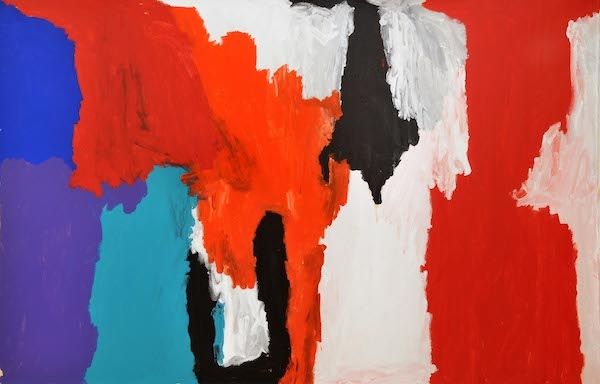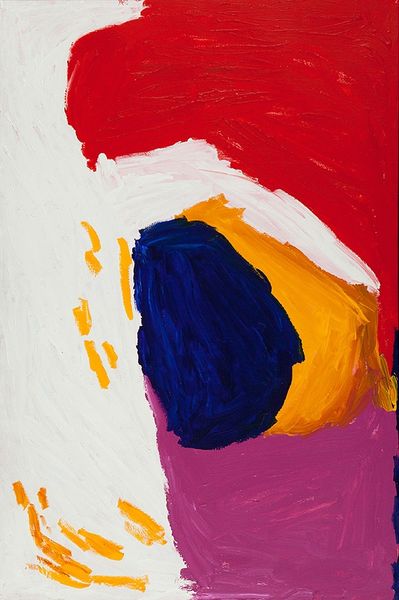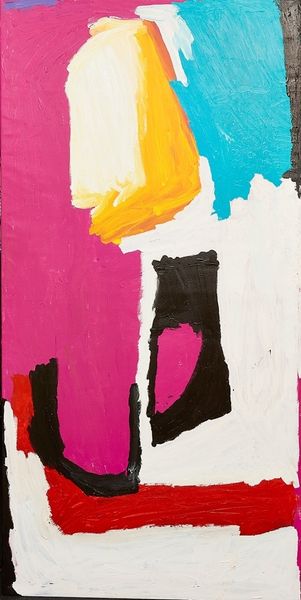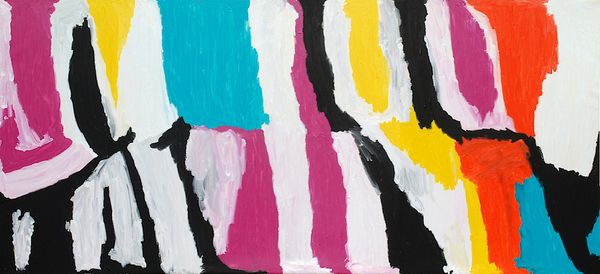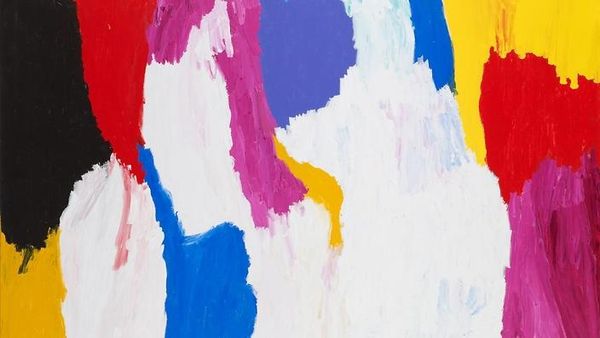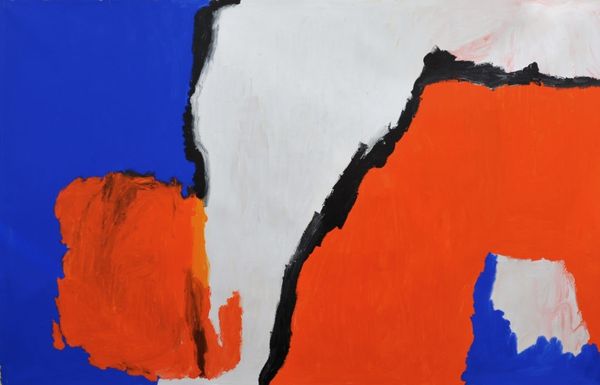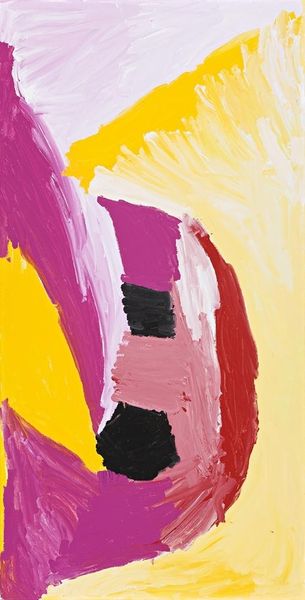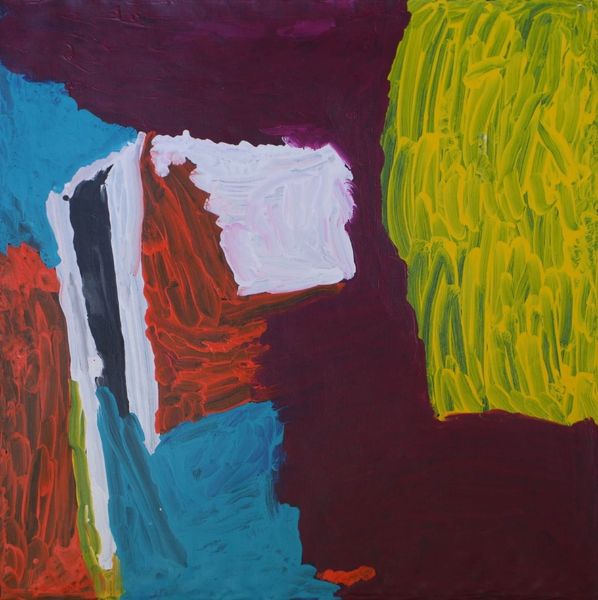
Copyright: Sally Gabori,Fair Use
Curator: Immediately, I'm struck by the raw energy in this painting! Such bold strokes, a powerful use of colour... What's your take on it? Editor: Well, let's start by providing some context. What we are looking at is "Dibirdibi Country" by Sally Gabori, created in 2010. Gabori was an Indigenous Australian artist from Bentinck Island and worked with acrylic on canvas. Curator: Acrylic, you say? Considering her late start as an artist, in her 80s, the availability and ease of use of acrylic paints certainly played a part. It eliminated the more labour-intensive methods of preparing traditional ochres and binders. Editor: Absolutely. And consider the timing. The establishment of art centres in Indigenous communities provided access to materials and a market, fostering an environment for artistic expression. It completely altered the production and dissemination. But tell me, what do you see depicted? Is it purely abstract? Curator: I think it toes the line beautifully. There's a clear sense of landscape—hints of coastlines in those turquoise smudges at the bottom and the fiery tones suggestive of the harsh Australian sun—but distilled through a uniquely personal vision. Her mark making has incredible physicality to it. Editor: Indeed. It seems important to consider how Gabori began painting as a means of preserving and sharing stories of her homeland after displacement due to a cyclone. It's an act of cultural and political reclamation on the walls of galleries and museums. This history permeates the very brushstrokes. Curator: Precisely! Look how she's almost attacking the canvas, the thick application creating a textured surface that almost pulls you into her experience of the island. Editor: The role of the art market is also key, how works by Indigenous artists entered into dialogue with existing canons. It’s complicated by issues surrounding appropriation, representation, and power. Still, “Dibirdibi Country” holds tremendous social weight as both cultural record and visual art. Curator: Definitely, seeing the world filtered through memory and making it physical. It’s more than just representation, it's the lived experience made material. Editor: A potent blend, indeed.
Comments
No comments
Be the first to comment and join the conversation on the ultimate creative platform.
